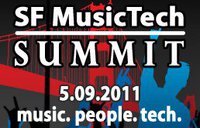I have three exciting concerts coming up with the San Francisco Symphony Chorus in the next few weeks, all of which we have been rehearsing simultaneously.
This weekend is Gustav Mahler’s Symphony No. 2 Resurrection on Saturday evening, May 7 and Sunday afternoon, May 8. The Symphony is taking Mahler 2, 6, and 9 on tour to Europe soon, which is why we’re performing the Resurrection for a second consecutive season. Alas, the chorus is not going on the tour, so you won’t be hearing me in Vienna or Paris. We had an open rehearsal with the orchestra on Wednesday, and there was a larger audience there than at a lot of concerts I’ve performed over the years. The soloists are mezzo-soprano Jill Grove and soprano Karina Gauvin; Michael Tilson Thomas conducts. Tickets are still available online and at the box office.
On Sunday, May 22 at 4:00 pm is our annual Spring Chorus concert that features the chorus without the orchestra. Highlighting the program is Maurice Duruflé’s Requiem with organist Robert Huw Morgan. The first half of the program focuses on choral arrangements. Barber’s Agnus Dei, a choral transcription of his Adagio for Strings, was done by the composer. The rest were arranged by others, including a beautiful 16-part a cappella version of Mahler’s Ich bin der Welt abhanden gekommen. Ragnar Bohlin will conduct; he also arranged the Schubert and Schumann songs that we’ll perform with our wonderful pianist, Matthew Edwards. Tickets are available online and at the Davies Symphony Hall box office.
The San Francisco Symphony season concludes with Michael Tilson Thomas’s first performances here of Beethoven’s astonishing Missa solemnis. Usually we have our first rehearsal with the Maestro a week or two ahead of the concerts. For this concert, though, we had our first rehearsal with MTT on Tuesday – seven weeks ahead of the concert! It was a real treat to get his shaping of the piece this early in the rehearsal process. The soloists are soprano Christine Brewer, mezzo-soprano Katrina Karnéus, tenor Gregory Kunde, and bass Ain Anger. We’re performing from the recent critical edition edited by Norbert Gertsch, who I’ve met at several German conferences on digital music editions. It’s a beautiful job of engraving! Performances are June 23 to 26 at Davies Symphony Hall; tickets are available online and at the box office.
If you’re coming to any of these concerts, let me know if you’d like to meet afterwards.


 It’s less than 24 hours until Turandot opens at
It’s less than 24 hours until Turandot opens at